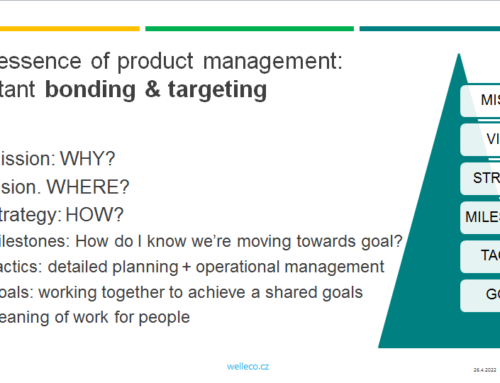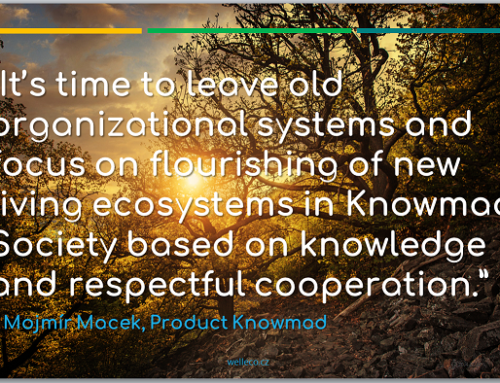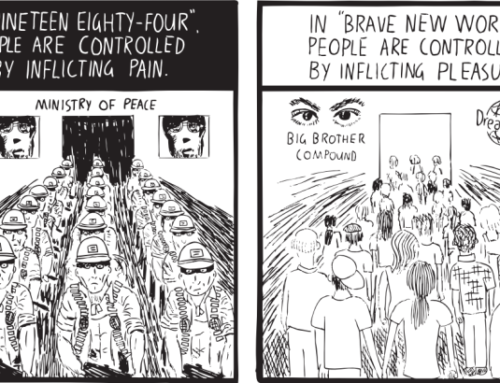The volume of data on internet, including maps is rapidly growing up. But gives information every time sense? Aren’t we sometimes overloaded with low quality unstructured data? Could something help on internet with better quality of data? Now we are facing period of scrabbling and grabbing and concentrating huge data. Internet is full of anonymous data, many times published by enterprises. Do we face strong managed manipulation or is it e-democracy? Many people in IT are focusing on solving consequences, than removing of causers? We are trying to integrate and compare information in unstructured form. Would it be better to focus on origin of data, their quality certification and their structuring? In some cases we have stopped to think about the fact, that majority of information is created in space and time. Everyone of us is overloaded with mainly transactional data. But do we know if they are valid, serious, up-to-date? Don’t we ignore horse-sense on way trying to invent something amazing? Sometimes less is more than much. One picture is better than thousands numbers J
In past centuries it has been difficult to find any relevant information. Books have been a treasury of knowledge. Last decades everything has changed, isn’t problem to find info, but… Who is responsible for originating? What is the quality of wells of data? Are we able to understand any quantity of information? Quality of location aware information is our future.
Where sleeps geospatially enabled business intelligence? This is the domain where geospatial intelligent information systems (giIS) could help to save internet from over-bubbling. Using geospatial analytics, historical values animation on maps (also in 3D), data and trends visualization is the current trend how to understand huge volume of data in space and time.
Islands of information
Major problem that we are facing are islands of information or stovepipes, where the flow of information manytimes involves making copies, which means redundant data. Redundant data has to be maintained which means redundant processes.
Data quality
One of the most serious problems facing organizations using geospatial data is data quality. The problem is exacerbated by a number of factors including the continuing proliferation of paper, increasing data volume, and inefficient business processes.
Is “traditional GIS” dead?
Many users of traditional GIS systems are mostly concentrated especially on flat map creation and publishing them. However, do they fully use the potential of geo-informatics? It is expensive to integrate with other enterprise applications, requires training staff on another user interface, and exacerbates the problem of redundant data. Sometimes it looks like a map is a “chrysalis” of possible useful spatial linked information hidden under cover. Can we in future develop a butterfly imago without killing pupa?
How we can achieve better recovery of investments made in maps?
What are other possibilities of a higher usage of big investments made in maps? Maps are freely available on Internet. How is their quality kept up-to-date? Can we rely on them? Many users are “fighting” with data comparison. Are we waiting for information and process integration on top of map? One of the possibilities how to exploit the maps potential is analysis/BI which significantly increases comprehensibility and information comparability.
Detailed Perspective from Czech Republic – giIS in real project
Czech LPIS
I would like to introduce you to Czech LPIS, a unique solution that has enabled the administration of agricultural aid applications in the whole Czech Republic since 1 May 2004 and that, in addition, has successfully cut the cost of operation of one of the Czech Ministry of Agriculture’s key information system segments. It has saved sometimes near 30% of subsidies pay off to farmers trying to comply with subsidies requirements and hiring consultants. It is a one of first real world examples of giIS. How it was achieved? The very untraditional usage of standard technology and change of thinking of customer was key!
The Czech LPIS project represents a new successful philosophy in the solution of a geographic information system for agricultural use. This project (productive from 2004) is using geospatial information in very non-traditional new way. Hundreds of government employees are updating already for 5 years geo-data through web interface in real-time, system is automatically classifying data, keeps history, manages terabytes of changing data, large 3D digital terrain model, gives all needed live data without conversion into farmer’s internet portal, state folks are not requiring paper forms first, but updating data with farmers electronically online into web application… For farmer it is not necessary to get all the maps, but to know, that on which of his fields he could get some subsidy title and to what he have to comply to. For him it is only one icon on thematic map, for system those are complex calculations of more than 18+ spatially analyzed parameters. LPIS is real Where 2.0 very productive system for helping farmers in Czech Republic and saving government every year tens of millions euro.
Conclusion
Long Live geospatially intelligent Information Systems (giIS)!
Location is becoming ubiquitous, not as stovepipe “traditional GIS” applications, but included into existing applications such as search engines, relational database management systems (RDBMS), crisis management, land use apps, government portals, facility management (FM) and CAD/BIM, in other words… Geospatial intelligence is key principle which can help people to understand huge volume of data in space and time and metamorphose them into information that makes sense. Information in future will be much more about 5 dimensions: Object ID + 3D geometry + in time + responsibility.
Here is also article on the same topic by Geoff Zeiss from original presentation on conference.





